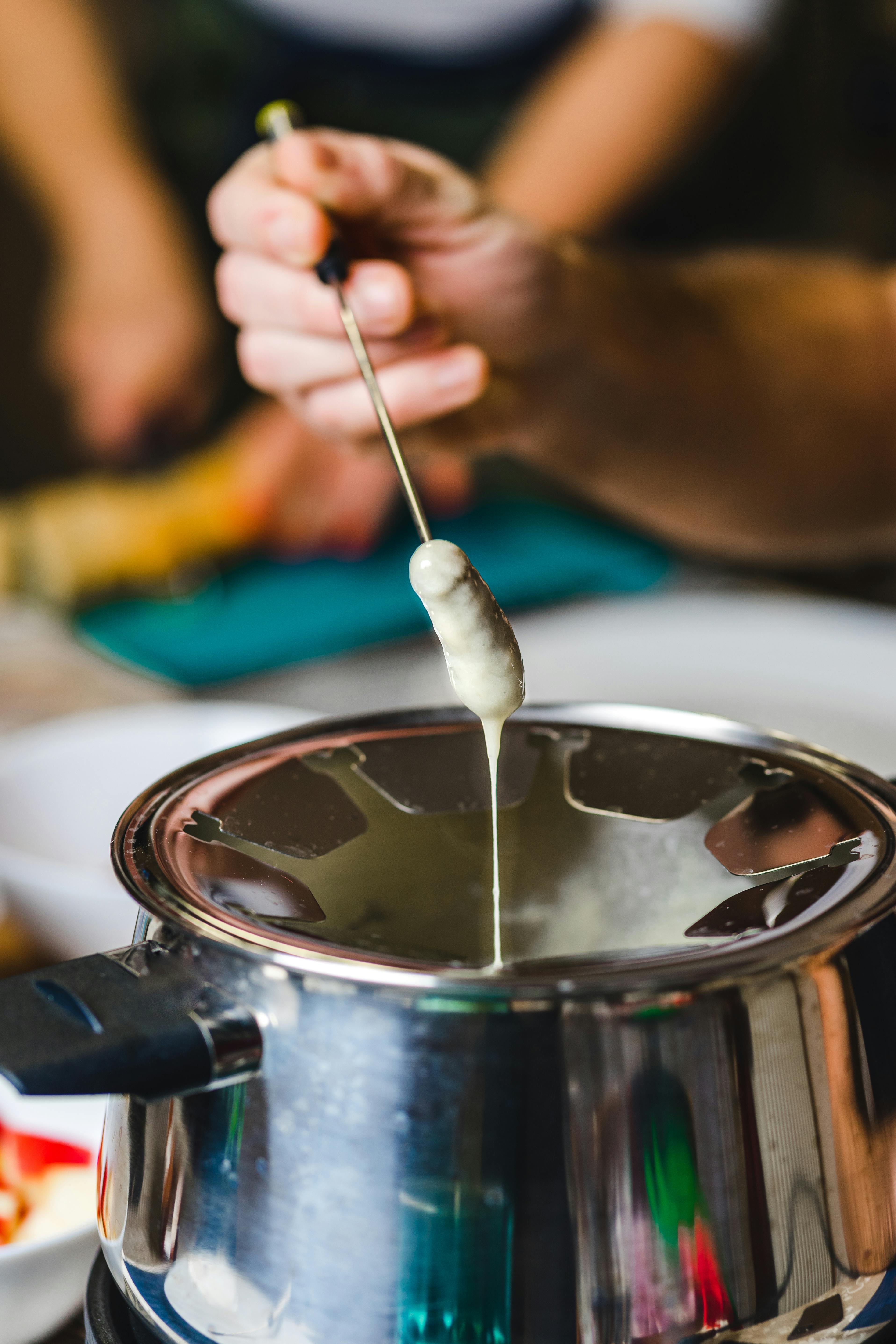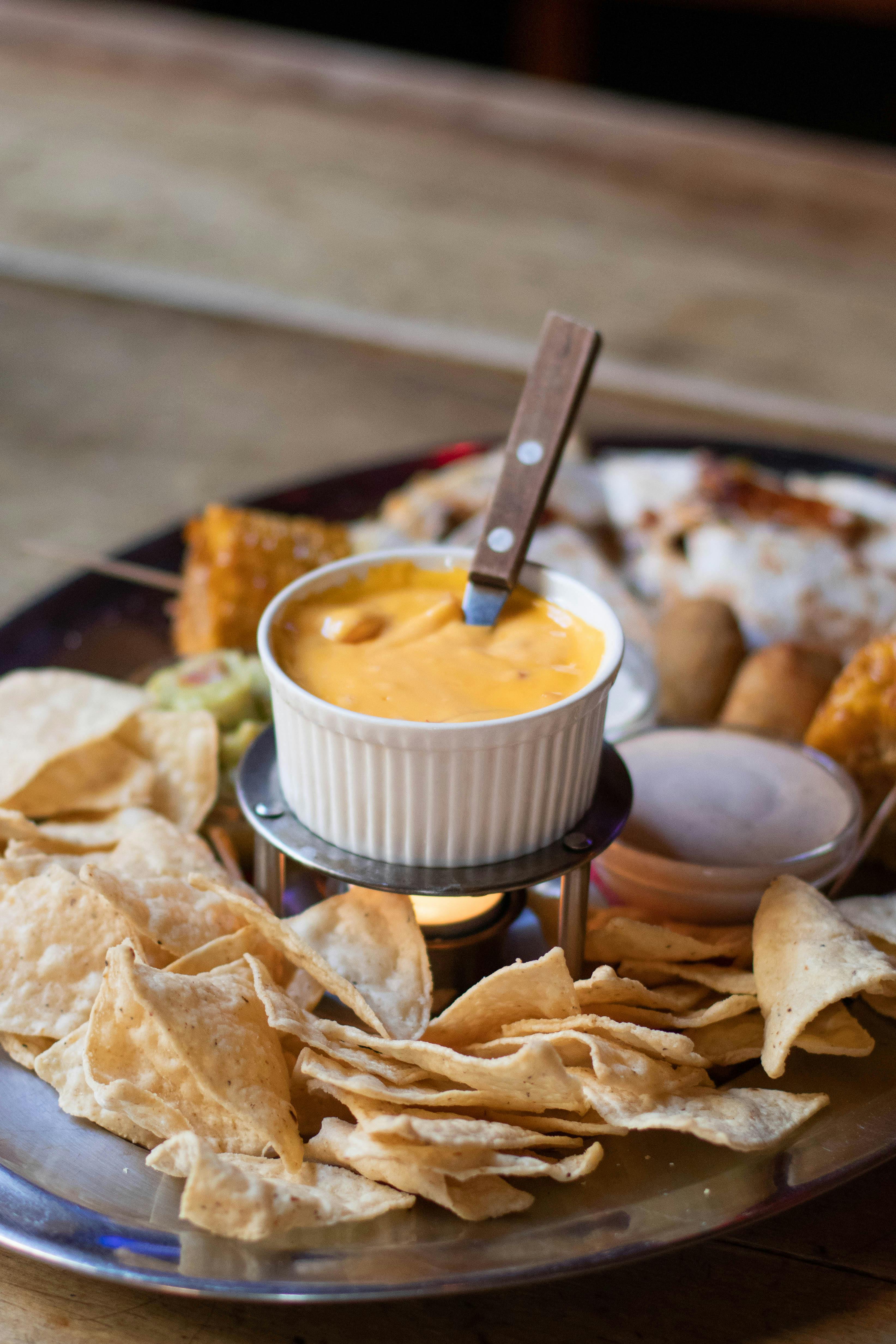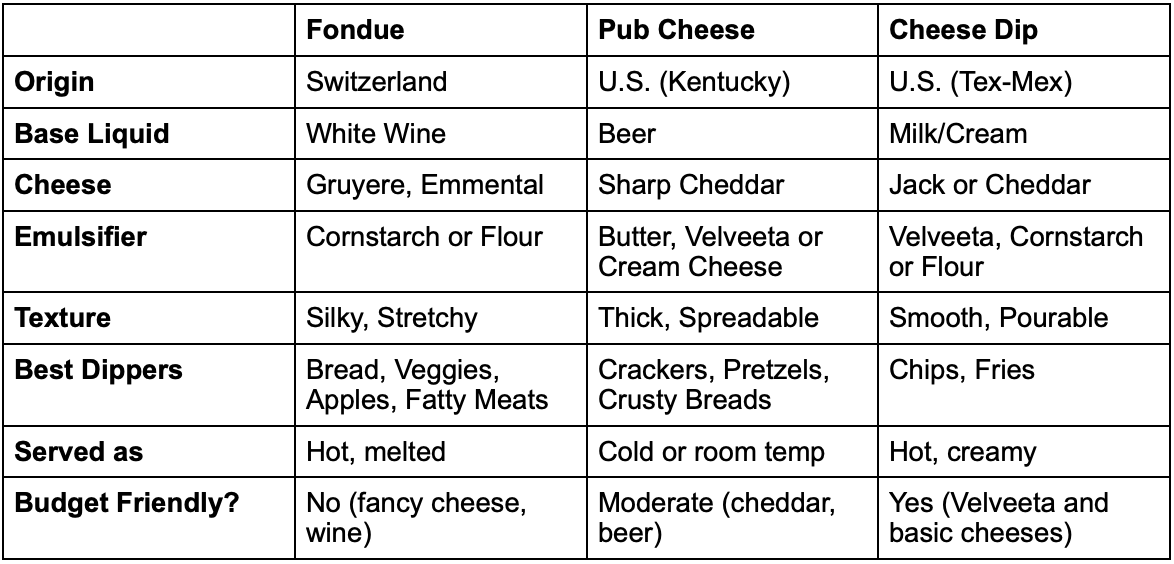Fondues (and Fondon’ts): A Survival Guide

Ever found yourself at a party, staring at a bubbling pot of cheese, and wondering, “Wait… is this fondue, or just really fancy queso?” If so, congratulations—you have excellent priorities in life. The world of melted cheese is a vast, delicious landscape, full of nuance and the occasional heated debate. Whether you’re dipping bread into a wine-laced Swiss classic, spreading beer-infused cheddar onto a cracker, or drowning tortilla chips in Tex-Mex goodness, each cheese dish has its own rules.
Let’s break it all down, once and for all. We’re talking about the difference between your most popular melted cheese dishes, and then we’ll explore some basic rules of the trade.
What is Fondue?
Fondue is Swiss in origin, dating back to at least the 18th century, though it became internationally famous in the mid-20th century. Traditional cheese fondue is made by melting a mix of Gruyère and Emmental (or Raclette) cheese with white wine, garlic, and a bit of cornstarch or flour to stabilize the emulsion. A splash of kirsch (cherry brandy) is often added for extra depth.
Over the centuries, fondue has gained several regional varieties that modify the cheeses and liquors. For example, France has a version with a much stronger, more floral wine, as well as a version with no wine at all, but some very strong, stinky cheeses. There’s also a cheddar and stout fondue, Tex-Mex tequila fondue, and truffle fondue, just to name a few.
So what makes fondue fondue?
Put most simply, it’s usually two things:
- The pairing of strong cheese with a form of alcohol, which are mutually complementary and quite addictive.
- It is served piping hot and is famous for being stretchy and incredibly silky.
So is queso dip a fondue? No. It’s a super mild cheese, and when you heat it up, it doesn’t get stretchy/silky, it just gets runny.
Does that mean queso is bad? Also no. But it’s useful to know the difference.
What about Pub Cheese?

Pub cheese (sometimes called beer cheese) is an American invention, particularly popular in the Midwest and Kentucky. It’s not a melted cheese dish but more of a spreadable dip.
If that doesn’t make much sense, look at it this way: fondue generally is served in a specialty bowl that circulates heat via steam or radiation. This is essential to keeping things nice and melted. Pub cheese, on the other hand, generally just comes in any serving bowl. It’s softer by nature, and thus doesn’t need to be constantly heated.
The OG version of pub cheese is Kentucky beer cheese, typically made with cheddar, lager, Worcestershire, cayenne, and garlic. Regional varieties make the cheese more “spread” and less “dip” by adding cream cheese, and of course every major U.S. region uses their own special cheese and liquor, such as pimento beer cheese, the bacon & smoked gouda pub cheese common in Texas, etc.
So… Cheese Dip?

Cheese dip comes in many forms, but if we’re talking mainstream American cheese dip, we’re usually looking at queso dip, a smooth, melted cheese dish that originated in Mexican-American cuisine. It’s generally made with a mix of velveeta and cream, maybe with a touch of cheddar as well. The Mexican part comes in with chili peppers and spices, which tend to lean toward Mexican cuisine.
And what makes it different from pub cheese? First off, there’s nothing alcoholic at all. Second, it’s generally served hot—I often see it presented in a slow cooker, similar to how fondue is served.
Of course, cheese dip isn’t limited to the Tex-Mex queso. We also have buffalo blue cheese dip, ranch & cheddar dip, brie & onion dip, and of course the all-known “nacho cheese dip” found at every single sports stadium in America.
Is There Really a Difference?
Okay, your friend Kristy is adamant that I’m making something out of nothing here. Cheese is cheese, and if she wants to call her melted velveeta and colby jack fondue, then I ain’t gonna stop her.
I’ll admit, we’re splitting hairs here, and none of this is written in scripture. However, to me it’s worth having at least these three categories because that helps you conceptualize and plan ahead for meals, including what to expect for your flavor profile, what are the ideal sides and dippers, and whether people will see the cheese dish as a fun appetizer versus the entire purpose for the party.
It’s the difference between “Hey bro come over and let’s play some games. I got queso dip,” and “Join me and worship at my altar of cheese.”
The Fondue Matrix
Just to help visualize the difference between these cheese dishes, I put together a chart. Check it out for better clarity.

At the end of the day, cheese is cheese, and as long as it’s melty and delicious, who’s really complaining? But if you want to impress your friends (or just be obnoxiously pedantic at dinner parties), it’s worth knowing the difference. Fondue is your fancy European centerpiece, pub cheese is your casual spreadable snack, and cheese dip is your easygoing, crowd-pleasing indulgence.
The Rules
Last thing before we wrap up. Let’s look at the dos and don’ts of a good melted cheese dish. No matter what you’re making, keeping this in mind will help:
Cheese Dish Dos:
✔ Use High-Quality Cheese – The better the cheese, the better the final dish. Processed cheese has its place, but real cheese brings complexity and depth.
✔ Balance Flavors Properly – Strong cheeses need a little acidity (like wine, beer, or citrus), while milder cheeses benefit from salt, spice, or umami boosts.
✔ Keep Fondue and Queso Warm – Nobody wants a cold, congealed cheese mess. Use a fondue pot, slow cooker, or double boiler to maintain the perfect gooey consistency.
✔ Pair Your Dippers Thoughtfully – Bread, pretzels, veggies, fruit, and meats should complement the cheese’s flavor, not clash with it.
✔ Emulsify Like a Pro – Cornstarch, flour, or even a touch of sodium citrate keeps cheese sauces smooth and prevents them from breaking into an oily mess.
✔ Respect the Cheese’s Origins – Sure, get creative, but don’t call your beer-laden processed cheese “authentic Swiss fondue.” Words mean things.
✔ Stir Gently and Consistently – Whether it’s fondue or queso, over-stirring can ruin the texture, while under-stirring leads to separation.
✔ Serve Immediately – Cheese-based dishes wait for no one. They are at their prime fresh and hot, so time your prep accordingly.
Cheese Dish Don’ts:
✖ Don’t Overheat – High heat can make cheese grainy, rubbery, or just plain separate into a greasy disaster. Keep it low and slow.
✖ Don’t Underseason – Cheese has salt, but sometimes it needs an extra boost of spice, garlic, mustard powder, or acid to reach its full potential.
✖ Don’t Use Pre-Shredded Cheese for Melted Dishes – Those anti-caking agents ruin the texture. Always shred your own cheese for the best melt.
✖ Don’t Let It Sit Too Long – Cheese dips and fondues get sad when left unattended. If it hardens or separates, your party guests will secretly judge you.
✖ Don’t Use the Wrong Liquid Base – Water makes cheese seize up, and using the wrong alcohol or dairy can overpower the dish. Choose wisely!
✖ Don’t Forget the Right Utensils – Fondue forks, sturdy dippers, or a ladle for queso make all the difference. No one wants a lost pretzel drowning in cheese.
✖ Don’t Assume All Cheese Dishes Are the Same – Fondue is not queso, queso is not pub cheese, and pub cheese is not nacho cheese. Respect the cheese taxonomy.
✖ Don’t Let a Cheese Snob Ruin Your Fun – Enjoy your melted, spreadable, or pourable cheese however you like, even if it means dipping a chicken nugget into brie fondue (I won’t tell).
 Matthew Christensen
Matthew Christensen
Weekly Newsletter Contributor since 2023
Email the author! matthew@dvo.com
Sources:
